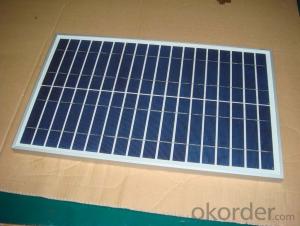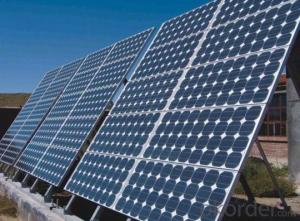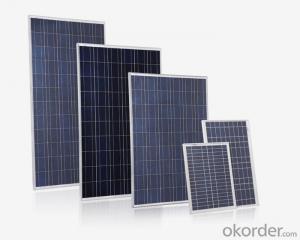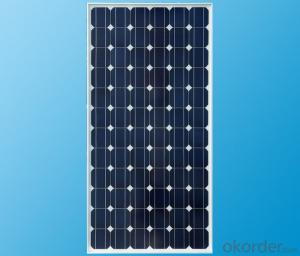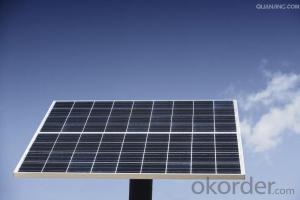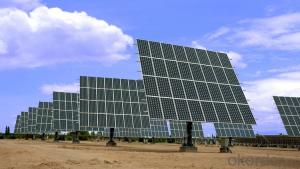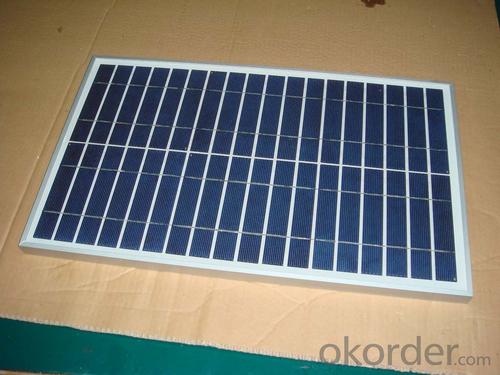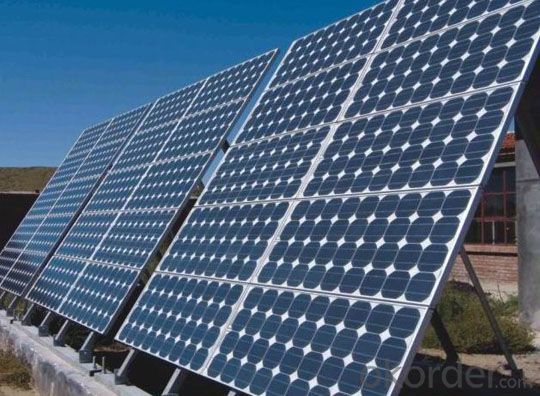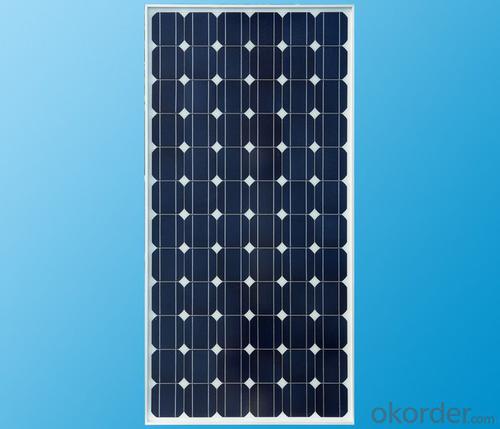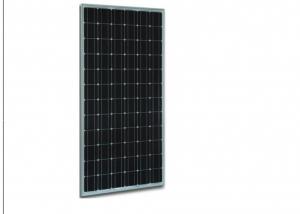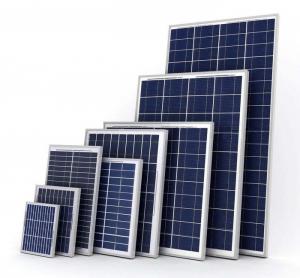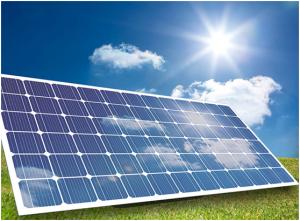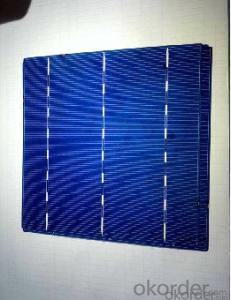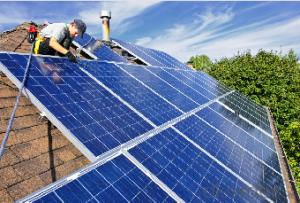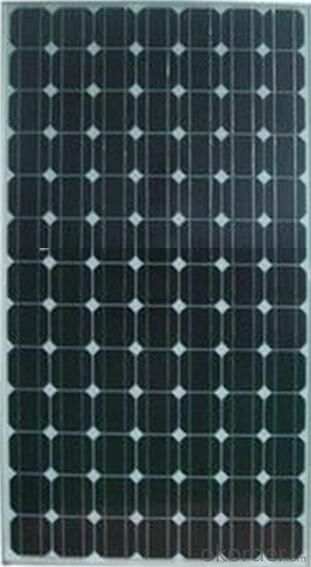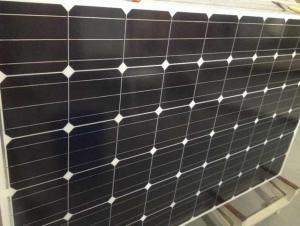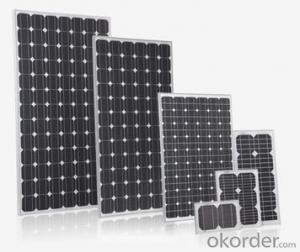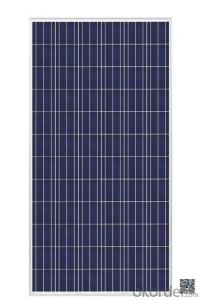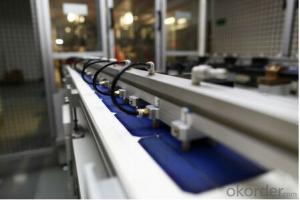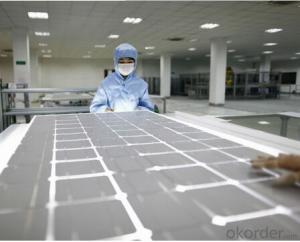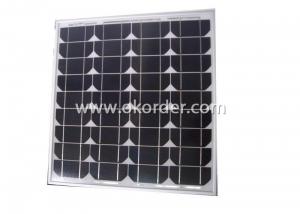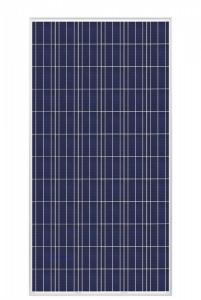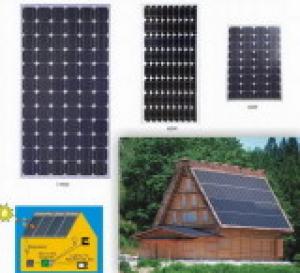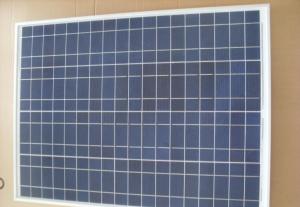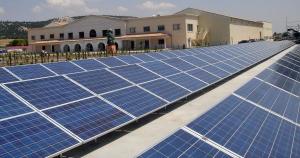USA Solar Panels with VDE, IEC, CSA, UL, CEC, MCS, CE, ISO, RoHS Certification Favorites
- Loading Port:
- China Main Port
- Payment Terms:
- TT or LC
- Min Order Qty:
- -
- Supply Capability:
- 10000000000000 watt/month
OKorder Service Pledge
OKorder Financial Service
You Might Also Like
1.Structure of Solar Module Description
CNBM Solar's photovoltaic module is designed for designed for large electrical power requirement. It is the optimal choice for both on-grid and off-grid power systems. CNBM Solar offers high performance of power per square foot of solar array.
2.Main Features of the Solar Module
Solar Cell: High efficency crystalline solar cell. Even if under the weak light, the solar module can produce maximum power output.
Tempered glass: Anti-reflecting coating and high transmission rate glass increase the power output and mechanical strength of solar module.
EVA and TPT: Using high quality EVA and TPT to prevent destroying and water.
Strong aluminum frames to strengthen the load hold and to stand against high wind.
Junction box: Multi function junction box with water proof.
Long lifetime: ≥25 years; Less power decrease.
Good performance of preventing from atrocious weather such as wind and hails.
Resisting moisture and etching effectively, not effected by geology.
The certificate issued by international authority: UL, TUV, IEC, VDE, CE.
Quick Details
| Place of Origin: | Guangdong China (Mainland) | Brand Name: | SunnyPower | Model Number: | SPM |
| Specification: | Normal | Application: | Home | Output Voltage (V): | 12VDC 24V DC |
| Load Power (W): | Depands | Solar Power (W): | 5W--300W | Certification: | VDE,IEC,CSA,UL,CEC,MCS,CE,ISO,ROSH |
| Size: | Customized dimensions | Max power: | 5W---300W | Cable: | MC-4 and connector |
| Frame: | White or black aluminum | Glass: | Low iron tempered glass | Cell type: | Mono crystalline and Poly crystalline |
| Cell brand: | Taiwan Motech | System voltage: | 12v or 24v |
Packaging & Delivery
| Packaging Detail: | Each panel with one single caton,and then 10pcs/5pcs with one outer carton,finally use wooden pallets to pack the cartons. |
| Delivery Detail: | 20 days |
3.Solar Module Images
4.Solar Module Specification
solar panels from 5W--300W, made of TAIWAN MOTECH brand cells,with CO in TAIWAN,Mono and Poly with VDE,IEC,CSA,UL,CE,ISO.
We import solar cells from Taiwan Motech brand, with this CO in taiwan and our CSA certification,we can still sell goods to Anti-dumping areas like USA. Our main products are solar panels, off grid and on grid solar home systems , solar street lighting systems, solar water heating system,solar pump,solar attic fan, solar DC LED lights and solar DC refrigerators.
Certificates : ISO, CE, VDE IEC, MCS, CSA-UL, CEC.
Delivery time: sample 10days, order 25-30days.
Sample: charged.
Payment term: T/T 30% as deposit, 70% before shipment. Or irrevocable L/C at sight.
Trade term: FOB Shenzhen or CIF destination seaport or Airport.
5.FAQ of Solar Module
1. Q: Do you have your own factory?
A: Yes, we have. Our factory located in Jiangyin city, jiangsu province.
2. Q: How can I visit your factory?
A: Before you take off from your country, please let us know. We will show you the way,or arrange time to pick you up if possible.
3. Q: Do you provide free sample?
A: Usually we do not offer free sample
4. Q: Could you print our company LOGO on the nameplate and package?
A: Yes, we can do that.
- Q: The Physics club in our school is trying to convince the Board of Ed to install solar panels in our school, and i was just wondering if anyone with some experience or real expertise in solar energy. I need some points about their usefulness some real pros and cons on maintenance, etc. Anything will help. Personally i would be perfectly for the idea, but i heard that the overall cost of installing them is much higher than the cost of the energy saved and government subsidies, but ive only heard about this.
- Solar panels give off no pollution, the only pollution produced as a result of solar panels is the manufacturing of these devices in factories, transportation of the goods, and installation. The production of energy from the use of fossil and some renewable fuels (e.g. wind turbines) can be noisy, yet solar energy produces electricity very quietly. One of the great pros of solar energy is the ability to harness electricity in remote locations that are not linked to a national grid. A prime example of this is in space, where satellites are powered by high efficiency solar cells. The installation of solar panels in remote locations is usually much more cost effective than laying the required high voltage wires. Solar energy can be very efficient in a large area of the globe, and new technologies allow for a more efficient energy production on overcast/dull days. Solar panels can be installed on top of many rooftops, which eliminates the problem of finding the required space for solar panel placement. Another great pro of solar energy is the cost. Although the initial investment of solar cells may be high, once installed, they provide a free source of electricity, which will pay off over the coming years. The use of solar energy to produce electricity allows the user to become less dependent on the worlds fossil fuel supplies.
- Q: I have a small marine solar panel on my boat It came with the boat. I want to make sure it is working before I connect it. With a volt meter It is only reading .2 volts dc. I would think it should be 2-5 volts?
- Mark, the 2 vdc is pretty typical. Most panels for home use are set up to charge 2 volt batteries, and they are wired for an, open circuit voltage of 8 to 9 volts. This allows it to have enough voltage to feed through a few diodes, perhaps a charge controller and 30 or 40 feet of wire and still have at least 5 volts left over. Once you connect it to the battery the panel will drop to whatever the batteries charging curve voltage would be. If you have a few minutes, I would suggest getting a book at the library called, The Complete Battery Book, by Richard Perez. Just read the chapters pertaining to lead acid batteries, the other discussions on lithium, ni cads and such won't apply to your boat system. If your panel is not large, and it's short circuit current rating in amps is less than 2% of the amp hour capacity of the battery, you can even run the panel without a charge controller. The book explains this as well. There is a great magazine that gets into the nuts and bolts of this stuff, it's called Home Power, you can find it online. You might also find some info at a couple renewable energy websites, I will list them below. Panels are rated in two ways, open circuit voltage, which you measure with a multimeter while the panel is in open sun and nothing is connected to it. The other rating is short cirucuit current, which you measure with an ammeter while the panel is in the sun as well. You connect the ammeter across the output of the panel and let all the power short right through the meter, so you'll need an ammeter big enough to handle more amps than the panel puts out. A 0 amp unit will work for your boat panel. These tests won't hurt the panel, or the meters, we do it all the time in the field, and the manufacturers will tell you to do the same test if you have a problem with a panel and they want to know if it's malfunctioning. You can check one of their websites if you like. Good luck Mark, and take care, Rudydoo
- Q: I'm building a solar panel for the first time and have the tabbed solar cells. I put together 4 strings of 9 cells. And the cells are each 0.55V, 3.6A.Because I'm going to be using the panel indoors and leaning it up against a window pane, I put them in a 24x36 inch poster-size frame. The frame has a plexiglass cover and a thick cardboard backing. My question to you is this. Will the cardboard backing up against the metal underside (positive side) of the solar cells be ok? I don't know if it may catch fire or if holes may burn through when there's full sun.My guess here is it should be ok. But maybe I'm wrong. If I am wrong, or if something should be put in between, please let me know what I should use.Thanks everyone!
- No,do not use card board because your cells are quite powerful. Accident short might cause fire. Replace it with another piece of plexi-glass.
- Q: What i would like to know is if you were using commercially available solar panels, clustered as close together as possible and spread out on one acre, how much electrical energy is produced? if u can 'translate' this into terms of ( hour of average daylight = powering a ____ for X units of time)
- There okorder / Why pay thousands of dollars for solar energy ($27,000 average cost) when you can build your own solar panel system for just a fraction of the retail cost. You can build a single solar panel or you can build an entire array of panels to power your whole house. Some people are saving 50% on their power bill, some people are reducing their bill to nothing. But what’s most impressive is that just by following these instructions some are even making the power company pay them!
- Q: Can solar panels be installed on a greenhouse?
- Yes, solar panels can be installed on a greenhouse. In fact, it is a common practice to install solar panels on greenhouses to harness solar energy for both power generation and to provide supplemental lighting and heating for the plants inside.
- Q: Installing solar panels requires a big initial investment. Before I make this investment I want to check to see if the money I will save by installing solar panels will actually pay for this investment, in the long run. To calculate my savings, we should consider the area (square feet) I currently have available to install solar panels. Look at the available sunlight and its intensity in my state each month of the year. Based on this data estimate how much energy my solar panel will generate. Then compare that with how much energy (kWh) I currently consume based on my electricity bill.
- Only by doing the calculations (figuring out how much you electricity bill is per month now and calculate how much time it will take to get to the figure of your solar panels. Don't forget to add a couple of percentage points per year higher(since when has electrical costs gone down)? and do the addition. That is when you will pay off the solar panels, as their power is free.
- Q: Can solar panels be installed on agricultural or farming operations?
- Yes, solar panels can be installed on agricultural or farming operations. In fact, many farmers have been adopting solar energy as a sustainable and cost-effective solution to power their operations. Solar panels can be mounted on rooftops, open fields, or even integrated into structures like barns or greenhouses. By generating clean energy, farmers can reduce their reliance on traditional energy sources, lower operational costs, and contribute to a greener future.
- Q: Can solar panels be installed on greenhouses?
- Yes, solar panels can be installed on greenhouses. In fact, it is a popular practice as it allows for dual benefits - generating clean energy while also providing shade and protection to the plants inside the greenhouse.
- Q: How much space is required to install solar panels?
- The amount of space required to install solar panels depends on various factors such as the size and type of panels, energy requirements, and available sunlight. Generally, a typical residential solar panel system requires anywhere between 100 to 400 square feet of unobstructed roof space per kilowatt of installed capacity. However, it is best to consult with a solar installer to determine the exact space requirements based on your specific needs and site conditions.
- Q: How long does it take to install solar panels?
- The installation time of solar panels can vary depending on various factors such as the size of the system, complexity of the installation, and the availability of resources. On average, a residential solar panel installation can take anywhere between one to three days. However, larger or more intricate installations may require a longer timeframe. It is best to consult with a professional solar installer to get a more accurate estimate based on your specific requirements.
Send your message to us
USA Solar Panels with VDE, IEC, CSA, UL, CEC, MCS, CE, ISO, RoHS Certification Favorites
- Loading Port:
- China Main Port
- Payment Terms:
- TT or LC
- Min Order Qty:
- -
- Supply Capability:
- 10000000000000 watt/month
OKorder Service Pledge
OKorder Financial Service
Similar products
Hot products
Hot Searches
